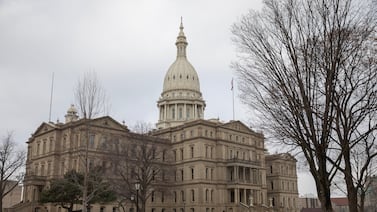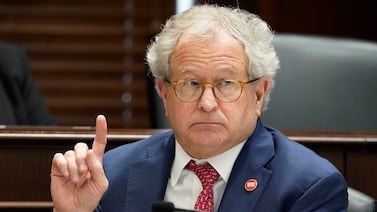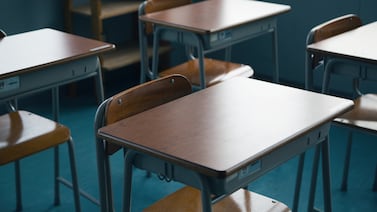Chicago Public Schools is launching a new effort to create a more diverse workforce by steering students toward teaching careers in the district.
About half of the district’s educators are white, even though more than 80% of its students are Black or Latino. The district is partnering with City Colleges of Chicago and Illinois State University to offer scholarships, financial and career counseling, and eventually preferential hiring to district graduates. Crown Family Philanthropies and the Joyce Foundation are funding the program.
Chicago schools chief Janice Jackson called the new “Teach Chicago Tomorrow” initiative historic, with the goal of tripling the number of graduates that the district hires to 500 a year.
“To our students, these teachers will be role models that many of them did not have when they were in school,” said Jackson, who is Black. As a former teacher, she added that she was able to connect with her Black and brown students because their backgrounds were similar to hers.
Illinois has seen marked declines in the ranks of Black and Latino students earning education degrees even though more students of color are graduating from college overall. A recent report by the policy group Advance Illinois zeroed in on a complex tangle of hurdles to a diverse teacher workforce in the state, including a large number of would-be educators of color who graduate from teacher preparation programs — but do not go into education jobs.
Those are hurdles that defy a simple fix, but Chicago officials said the new program is an important step.
The district says 10% of its students express interest in teaching in surveys, and City Colleges of Chicago Chancellor Juan Salgado said it makes a lot of sense to tap that homegrown talent — students who know the district and its needs well.
The program will also encourage more men to become teachers. My Brother’s Keeper, created by former President Barack Obama to address racial disparities facing young men of color, also will partner with the district.
“There’s power in the teachers of color; we understand our students’ stories,” said Daniel Jackson, a graduate of the district and Illinois State University. He now teaches the second grade at Dixon Elementary on the city’s South Side.
The Chicago Teachers Union said in a statement it welcomes the initiative but believes the district can do more to offer a welcoming work environment for diverse educators and people of different cultures. The union faulted school closings, the rise of charter schools and what it described as punitive teacher evaluations as factors hampering diversity in the district.
“Let’s be clear: Increasing diversity is just one step,” said the union’s vice president Stacy Davis Gates in the statement. “CPS needs to care for, respect, and nurture the Black and brown teachers we already have.”






